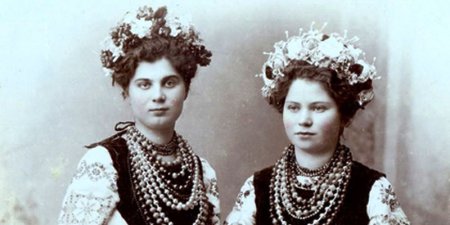Ukrainian ornaments have always had two functions – ensure protection (oberih) and information. Amulets and ritual jewelry – rings, bracelets and crosses – were worn close to the skin. Ornaments worn over clothing testified to the owner’s wealth – six strands of coral beads could cost as much as a pair of oxen.
We look more closely at the design of these ornaments to understand why and when they were worn by our grandmothers and ancestors.
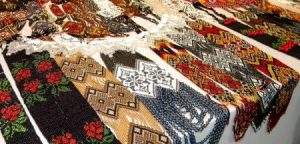
Gerdan – two long strips of beaded patterns joined by a medallion which lies on the wearer’s solar plexus (an important power chakra). They were worn by both men and women. In Bukovyna, a small mirror dangled from the ends of gerdan ornaments.
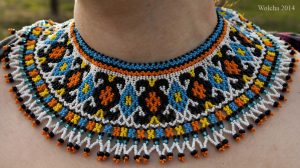
Sylyanky or pletinky – parallel lines of beads tied behind the neck. The name comes from the manufacturing process (sylyannya – way of stringing beads). Women wore narrow sylyanky (two to three centimetres) every day as a talisman (the power of each sylyanky was determined by the intricacy of its design). Hutsuly (Carpathian mountain people) sewed these beaded talismans onto red canvas ribbons. The traditional beaded designs were shaped like geometric diamonds with simple or complicated contours, triangles branching out at the corners, zigzags and curved lines – symbols of infinity.
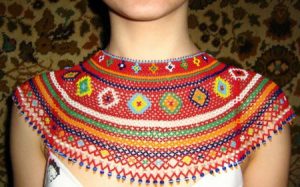
Kryzy – wide (20 cm) round beaded collars that covered a woman’s neck, chest and shoulders. Lemkos and Boykos wore them on special festive days. Several multicoloured collars of different length and width were worn from the neck down to the waist. 200 hours were needed to make such a collar.

Zhardy – metal necklaces consisting of two or three strands strung on a red or metal base of crosses. Two discs connected the two ends behind the neck – cheprahamy, which are larger than the crosses on the necklace. The cheprahamy are covered with solar symbols – a wheel with four, six or eight spokes (the modern version is a cross), a rosetta or concentric circles.
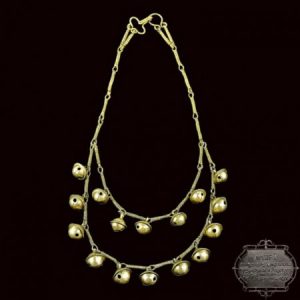
Shelest – metal necklace with small round bells, which were made and worn by Hutsuls. It is the most ancient Slavic ornament.
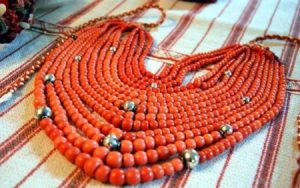
Patsyorky – glass beads. Craftsmen used smalt – an opaque alloy of different coloured glass – dark blue, turquoise, white, green, brown, black and red. Round beads were encrusted with gold and decorated with bright-coloured inks.

Dukach (lichman) – pectoral shaped like a medal-like coin with a metal bow decorated with stones. It was a central piece of breast ornaments. It was pinned in the middle of many strands of beads. The face of the most ancient dukach shows the “portrait” of a person who hired Ukrainian Cossack warriors, and the reverse side shows the battle scene in which the person took part. Dukachi with Biblical scenes were very popular.
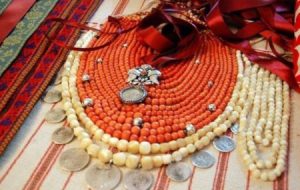
Bunt or coral (korali) ornament – necklace of cylinder- or barrel-shaped coral beads strung on a thread. Women would wear from one to 25 strands of coral beads.

